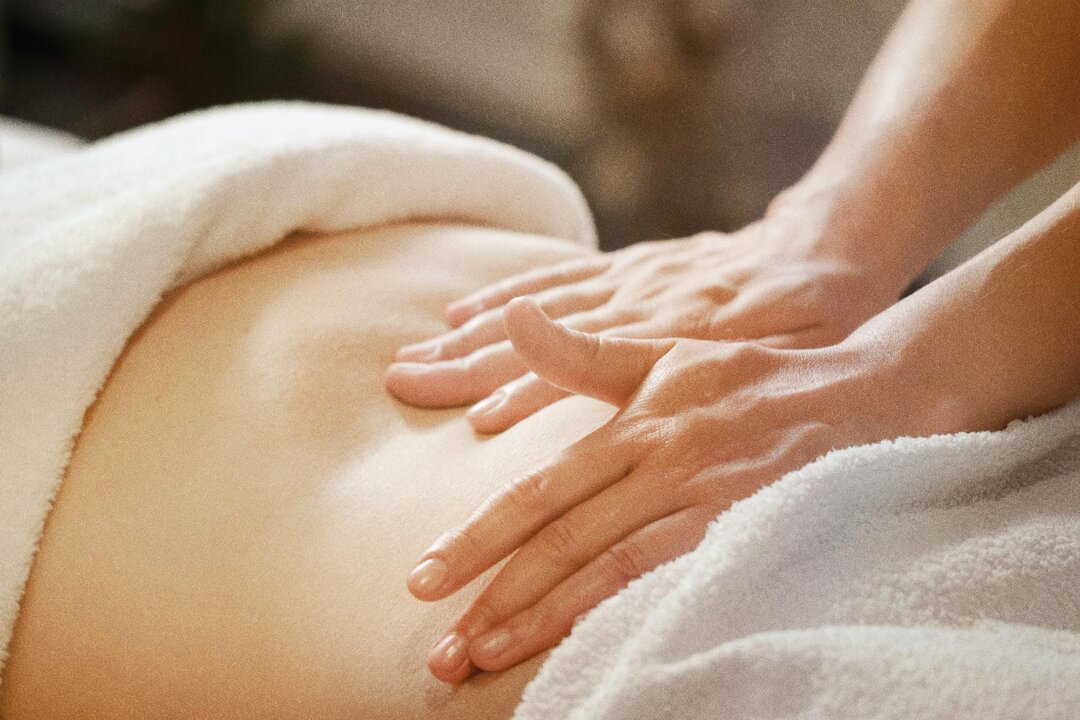
Cassie Madsen found occasional massage therapy helpful for general relaxation during the height of her struggles with irritable bowel syndrome and anxiety. Still, she wasn’t expecting her massage therapist to offer an abdominal massage. She'd never heard of such a thing.
The duo first talked about Madsen’s gut function, including frequent constipation. “She thought it would be helpful,” Madsen told The Epoch Times. “I felt a little better afterward.

It wasn’t a magic cure or anything. I feel like sometimes it works for me, and sometimes it doesn’t make a big difference.” Now a dietitian specializing in gut health and nutrition, Madsen said that while abdominal massage can’t replace the role food plays in digestion, the power of touch is helpful and accessible enough for symptom management that she often shares information about it with her clients.
Abdominal massage can be beneficial for manually loosening or stretching the muscles involved in digestion, relieving discomfort, and potentially stimulating bowel movements. Abdominal massage can be especially helpful as an alternative to laxatives and stool softeners, which can be harsh and have lasting effects on the gastrointestinal tract, according to Jillian Miller, a physical therapist with Brooks Rehabilitation who has training in colonic massage among her pelvic health specialization. The standard technique involves the patient lying on their back with knees bent to relax the abdominal muscles, Miller said.
You begin by tracing the path of the ascending, transverse, descending, and sigmoid colon, applying moderate downward pressure. This sweeping stroke is done five to seven times. This is followed by repetitive C-shaped scooping strokes applied to five points where fecal matter tends to accumulate.
“While some variations exist—some techniques start at the sigmoid colon and work backward—I usually follow the natural digestive path, beginning on the right side and progressing toward the rectum,” Miller said of the second part of the massage. “Clinically, I always encourage my patients to try both directions and see what works best for them.” Numerous videos and diagrams are available online, though some are in mirror-image format.
The important thing to remember is that massage typically begins on the right, lower side and follows the natural flow of digestion. Abdominal massage should not be painful or overly uncomfortable. Though injuries are rare, there are case reports of organ trauma associated with aggressive or vigorous massages.
Correct posture as it repositions organs and restores optimal function Alleviate stagnation of lymph and blood to strengthen the immune system Address stored, unprocessed emotions in the digestive system Drink half your body weight in ounces of water a day unless your doctor says otherwise, and try to drink a large portion at room temperature and in the morning. That means someone weighing 160 pounds would shoot for 80 ounces of water daily. Get up and move by exercising, walking, or even standing, preferably early in the day.
Wait for a strong urge before heading to the toilet. Don’t sit on the toilet for longer than 10 minutes, and avoid the urge to bear down or push. Position yourself with your knees higher than your hips (unless you’ve had a hip replacement), lean forward, relax, and maintain an even breath.
However, she said many of her patients using self-massage and other techniques learned in physical therapy enjoy significant, ongoing well-being. It’s common, Miller added, for new patients who haven’t had a bowel movement for a couple weeks to have one right after receiving abdominal massage, even before they leave the office. “Like a lot of things we do, we don’t want people to keep coming back to therapy,” she said.
“We want to give them all the tools they need, so they can manage it on their own.”.















